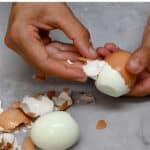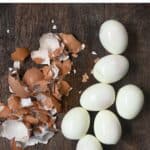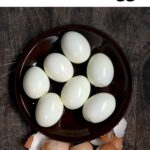This post may contain affiliate links. Please read our disclosure policy.
A step-by-step guide on how to peel hard-boiled eggs perfectly every single time – with no cracks, divots, or gouged-out bits of egg white!
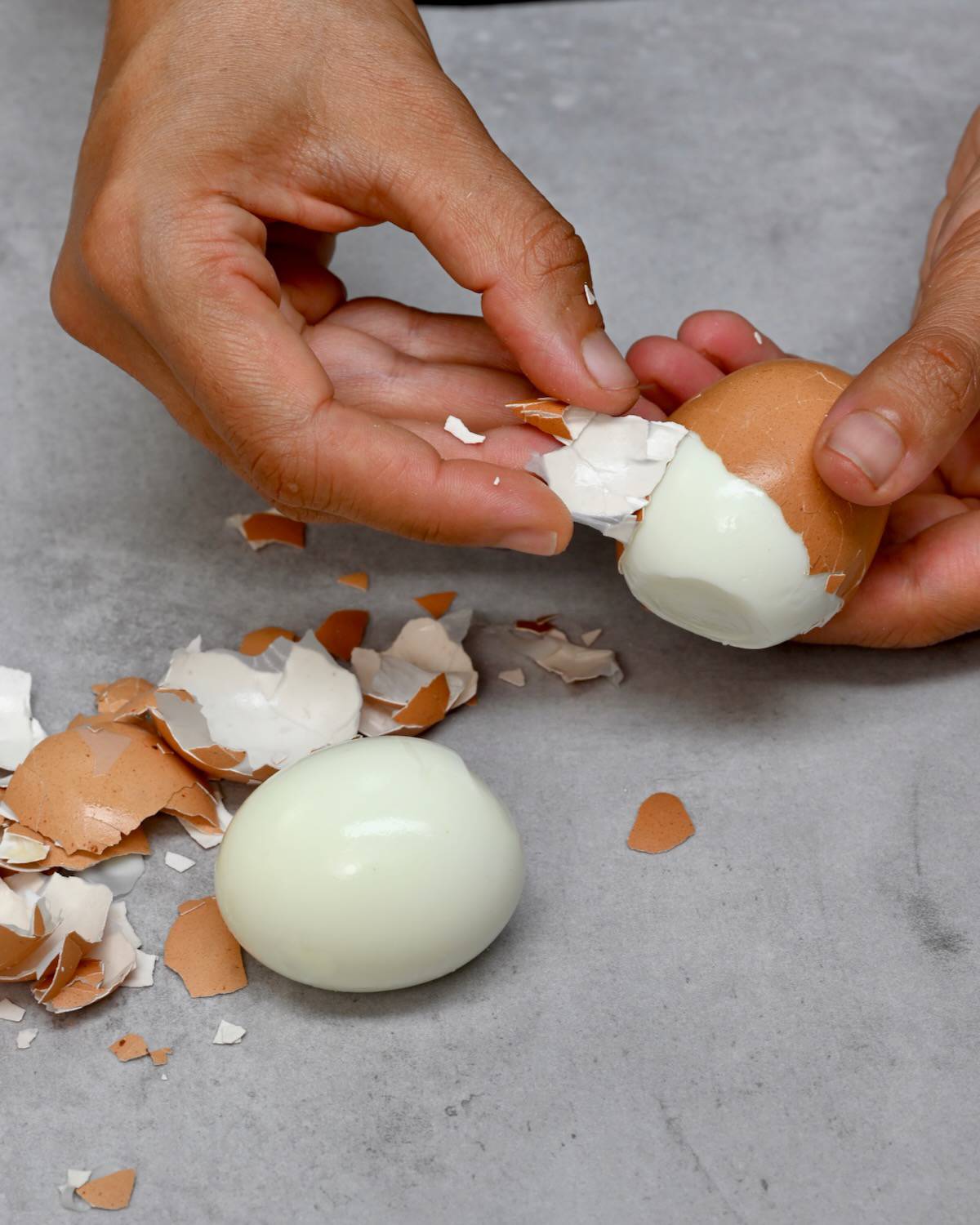
Boiled eggs are one of my go-to meal prep ingredients to add a tasty, versatile protein to my diet. However, peeling hard-boiled eggs can be frustrating and time-consuming without the proper method. Luckily, with some trial and error, I’m ready to share my preferred method for how to peel hard-boiled eggs.
Not only have I already pulled together all the top tips to cook boiled eggs to make them easy to peel, but now, in this post, I’ve compiled a step-by-step method for how to peel a hard-boiled egg without the shell sticking, the egg whites being gouged out or cracking, etc.
Instead, you’ll have perfectly peeled eggs, ready to enjoy as a snack (with just a sprinkle of salt and pepper), in potato salad, egg salad, and other salads, deviled eggs, sandwiches/toast, and more. I’ve also shared a post on how long to boil eggs for soft (jammy eggs!), medium, or hard eggs.
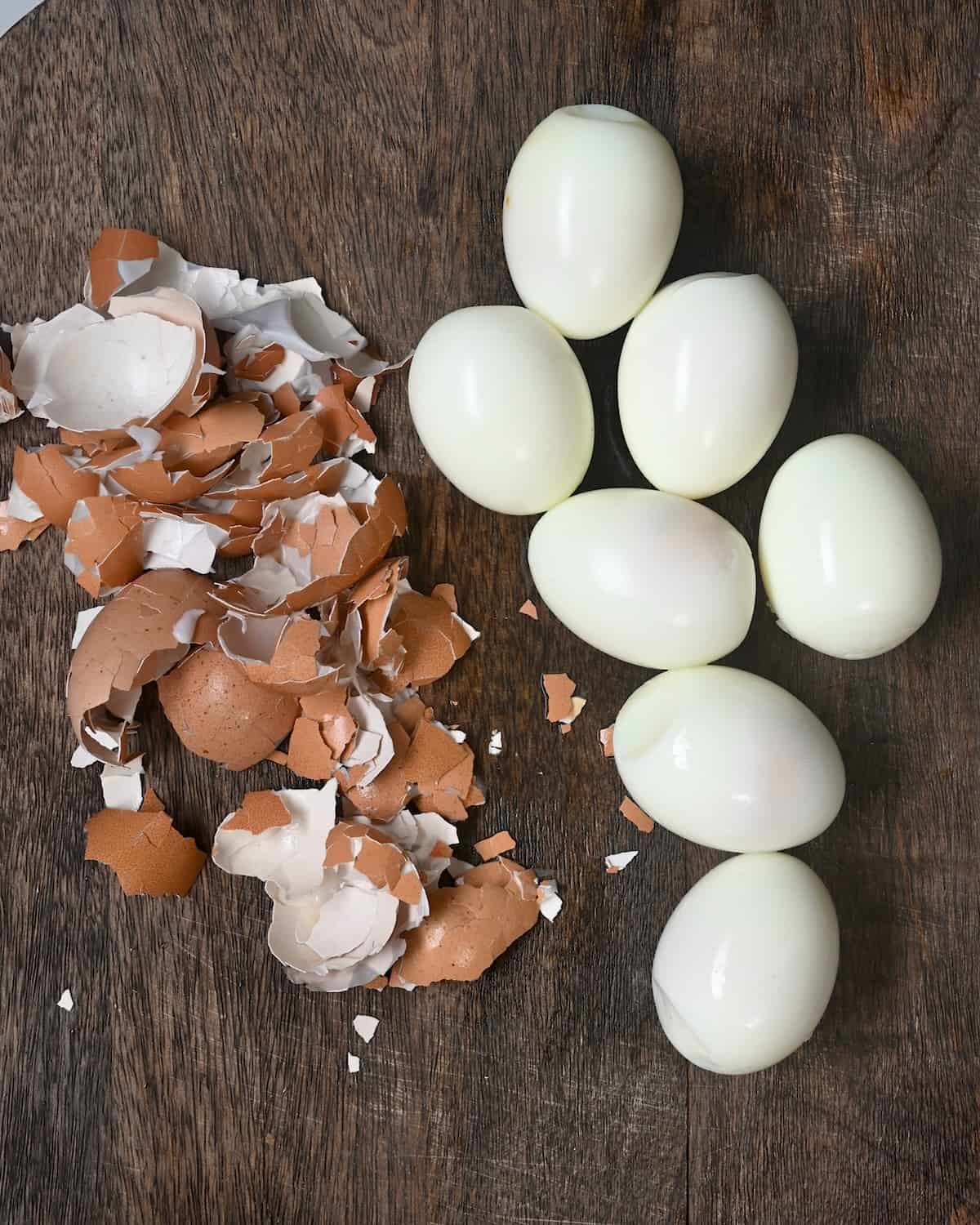
Want to save this recipe?
How to Peel Hard Boiled Eggs
The first step to peeling hard boiled eggs is ensuring you learn how to cook eggs for easier peeling. There are several methods I’ve shared (complete with simple tips and tricks for making them easy to peel):
- Air fryer boiled eggs (soft, medium, and hard)
- Stovetop perfect hard-boiled eggs recipe
- Instant Pot hard-boiled eggs
The cooking time will depend on whether you want them soft, medium, or hard-boiled.
Generally speaking, for the easiest peel hard-boiled eggs, it’s recommended that you use slightly older eggs that have been in your fridge for a few days vs. fresh eggs. This is because the shell membrane won’t be quite as “sticky” at that point.
Step 1: Let the Eggs Cool
No matter which method you use to boil the eggs, to stop them from overcooking, use a slotted spoon to place them in a large bowl of ice water to halt the cooking process and cool them down enough to handle.
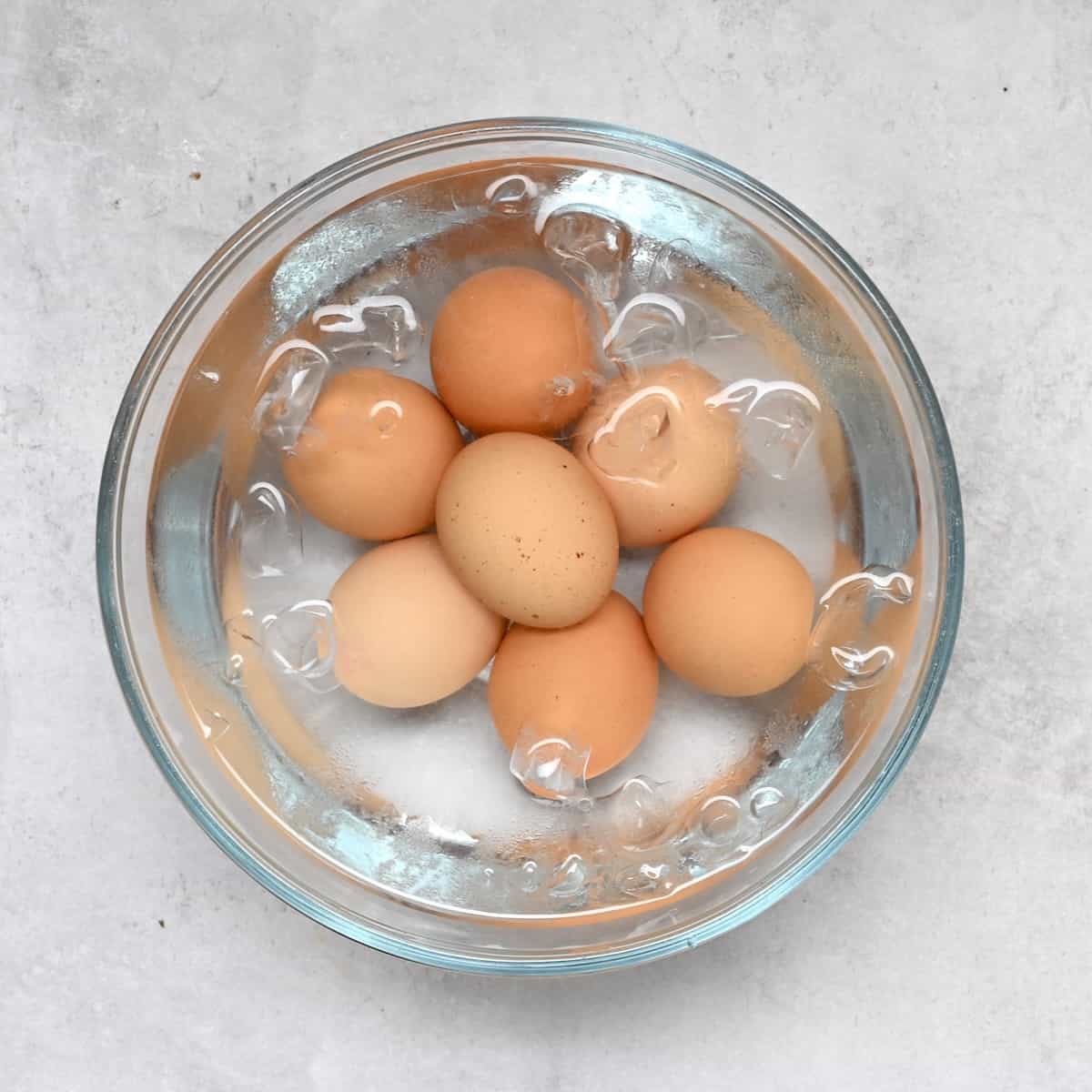
This will cause the eggs to contract away from the shell, simplifying the peeling process. Generally, eggs will peel easier when they’re still a little warm, so only leaving them in the ice bath for a few minutes is preferable.
Step 2: Crack the Shell
First, start by creating a single crack in the shell, either by tapping it against a surface or with a knife or spoon.
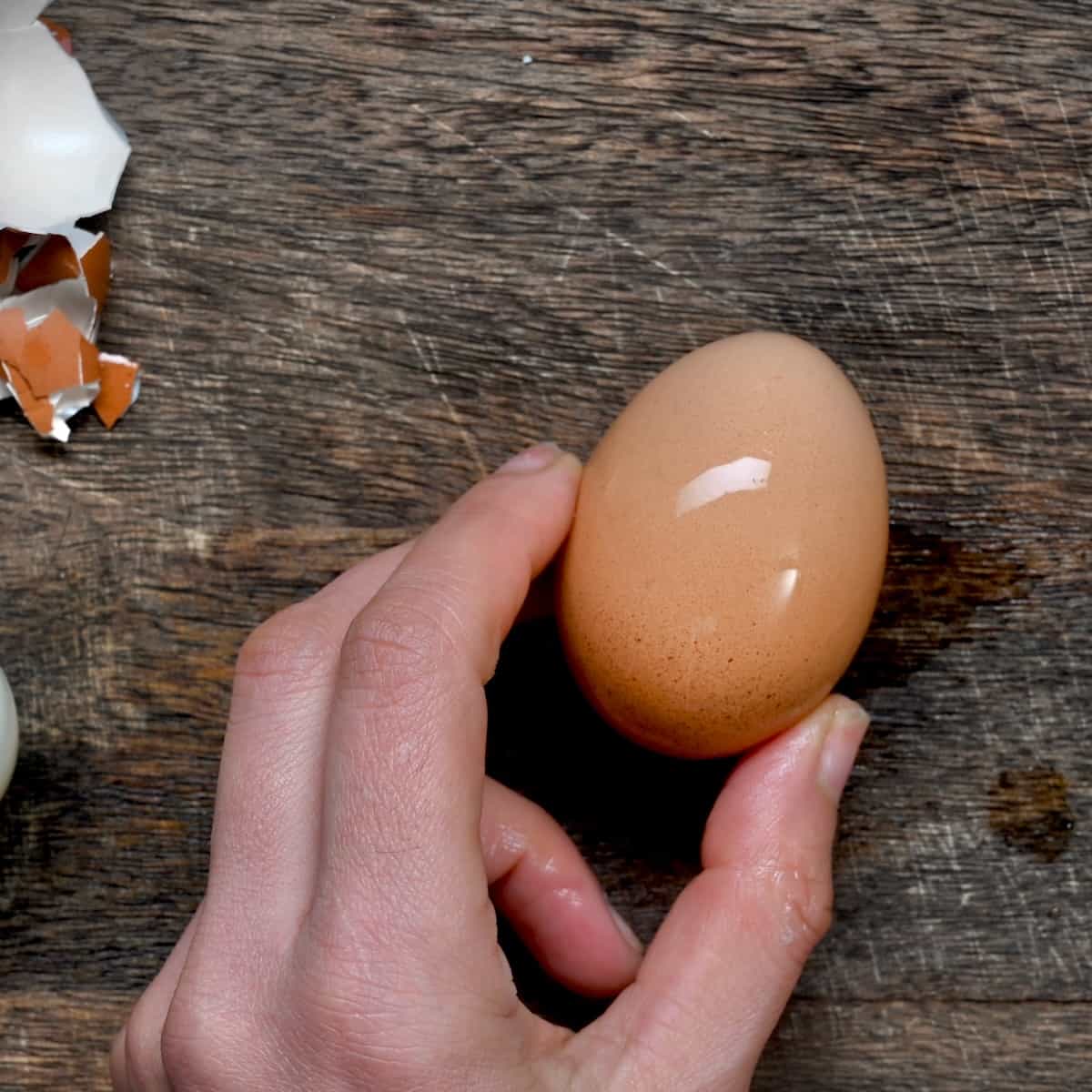
Don’t be too rough when you tap it; otherwise, you can cause the egg to crack, too.
Step 3: Roll the Eggs
The key step for how to easily peel hard-boiled eggs is rolling them. Simply roll your cracked egg lightly back and forth on a hard surface (like a cutting board or your kitchen counter) with the palm of your hand.
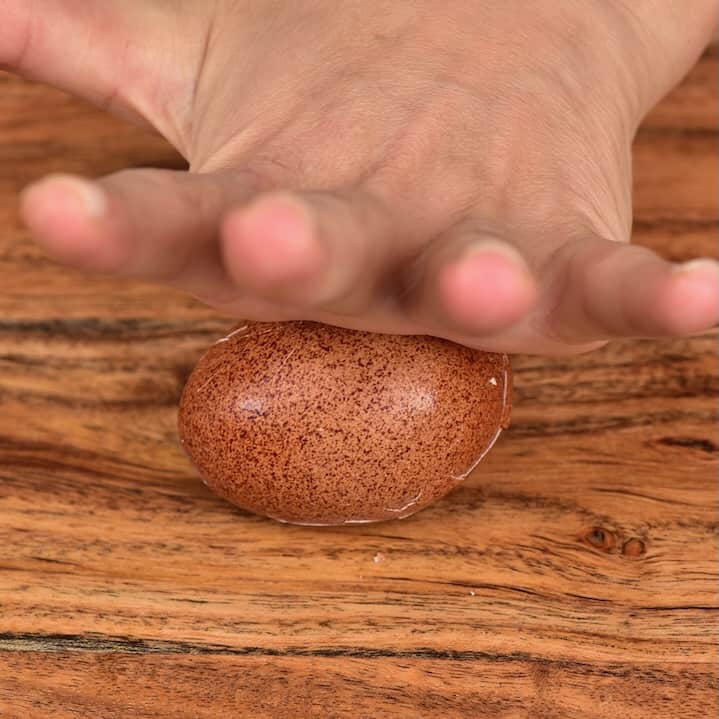
This will cause fractures across the entire shell, making it easy to remove. Don’t use too much pressure, or you risk breaking the egg white too.
Step 4: Peel the Shell
At this point, the fractured shells should be fairly easy to peel away from the egg white. I usually start peeling from the large end of the egg (where the air bubble is).
You can do it under running water (or in a bowl of water) to make it even easier and remove any small shell pieces. Voila – easily peel hard-boiled eggs!
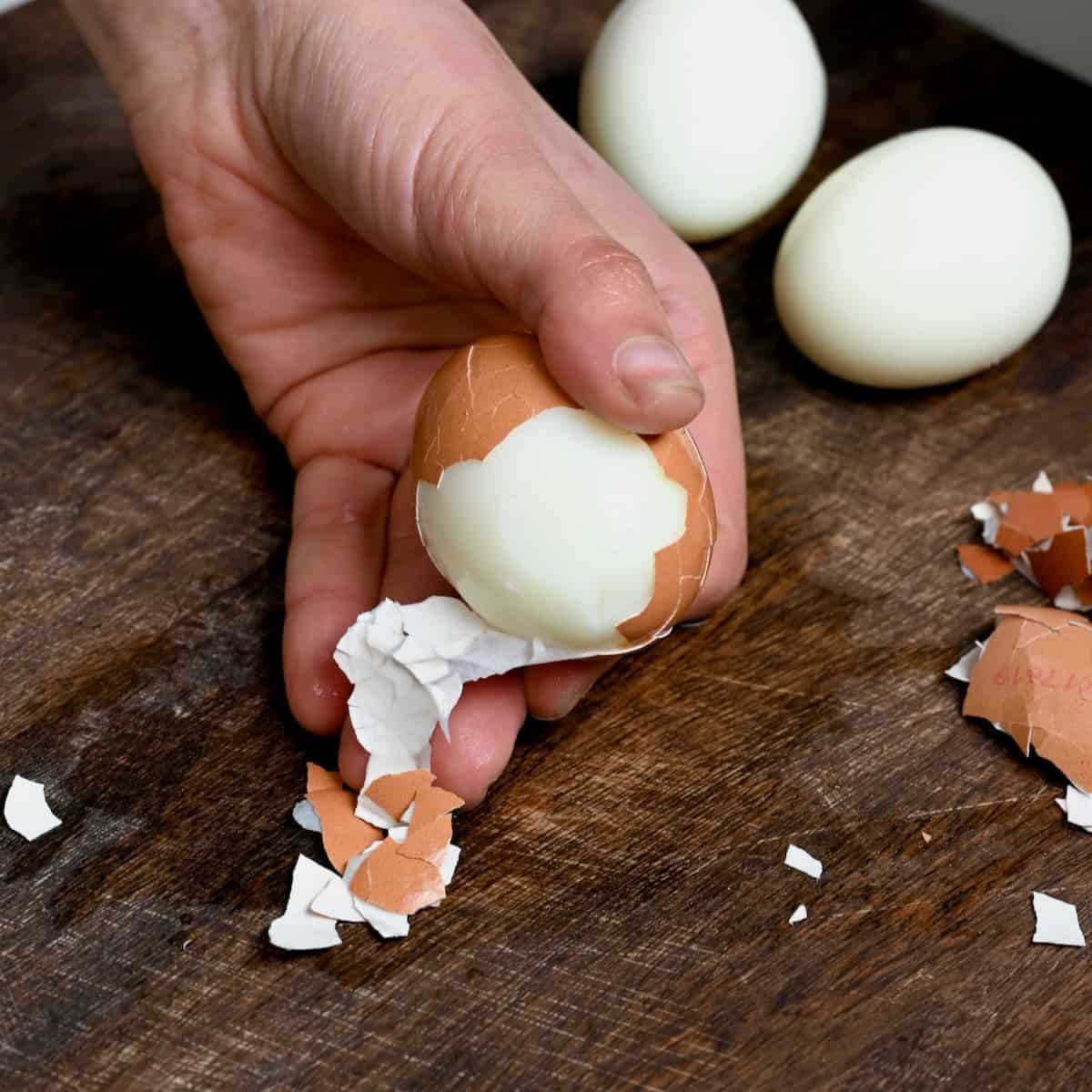
Next, learn how to best store cooked eggs here (in the peel and peeled boiled eggs).
What Can I Do with Eggshells?
Instead of discarding the eggshells after peeling hard-boiled eggs, you could use them to:
- Deter pests: i.e. snails/slugs, as they don’t like the sharp shell edges.
- Compost: They contain a heap of minerals for better homemade compost.
- Turn into eggshell powder: Sterilize, dry, and crush the shells into a powder. This can be used for beauty purposes, making fertilizer, as a calcium supplement, for cleaning, etc.
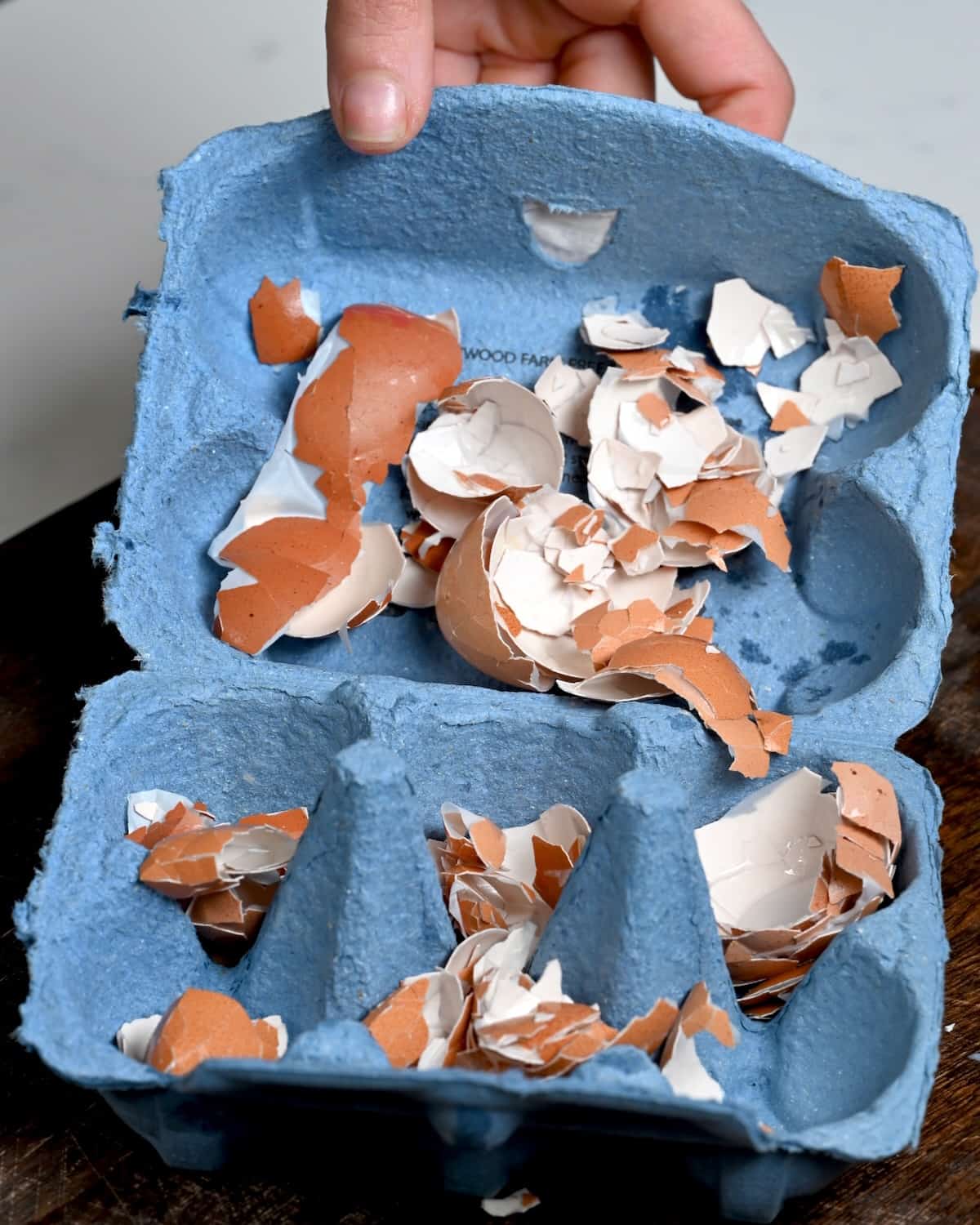
More Simple Egg Recipes
- How Do You Poach an Egg? (+ Top Tips | Multiple Methods)
- How to Pasteurize Eggs (3 Ways + Bonus)
- Simple Soy-Marinated Ramen Eggs
- Easy Pickled Eggs (3 Ways)
If you try these easy peel hard boiled eggs, let me know how it goes in the comments below. I’d appreciate a recipe card rating and would love to see your recipe recreations – tag me on Instagram @Alphafoodie!
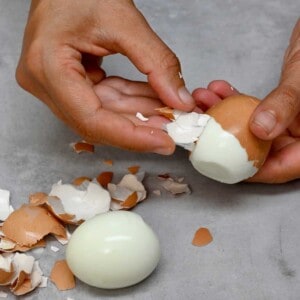
The Easiest Way to Peel Hard Boiled Eggs
Ingredients
- 4 eggs or as many as wanted
Instructions
- The first step is to cook the eggs. There are several methods: Air fryer boiled eggs (soft, medium, and hard) Stovetop perfect hard-boiled eggs recipe Instant Pot hard-boiled eggs
- No matter which method you use to boil the eggs, to stop them from overcooking, transfer them to a large bowl of ice water to halt the cooking process and cool them down enough to handle (about 4-5 minutes).
- Remove the egg from the ice bath and create a single crack in the shell, either by tapping it against a surface or with a knife or spoon.Don't be too rough otherwise, you can cause the egg white to crack, too.
- Roll the cracked egg lightly back and forth on a hard surface (like a cutting board or your kitchen counter) with the palm of your hand.This will cause fractures across the entire shell, making it easy to remove. Don't use too much pressure, or you risk breaking the egg white too.
- At this point, the fractured shells should be fairly easy to peel away from the egg white. I usually start peeling from the large end of the egg (where the air bubble is).You can do it under running water (or in a bowl of water) to make it even easier and remove any small shell pieces. Voila- easily peel hard-boiled eggs!
Notes
Nutrition
Nutrition information is automatically calculated, so should only be used as an approximation.

